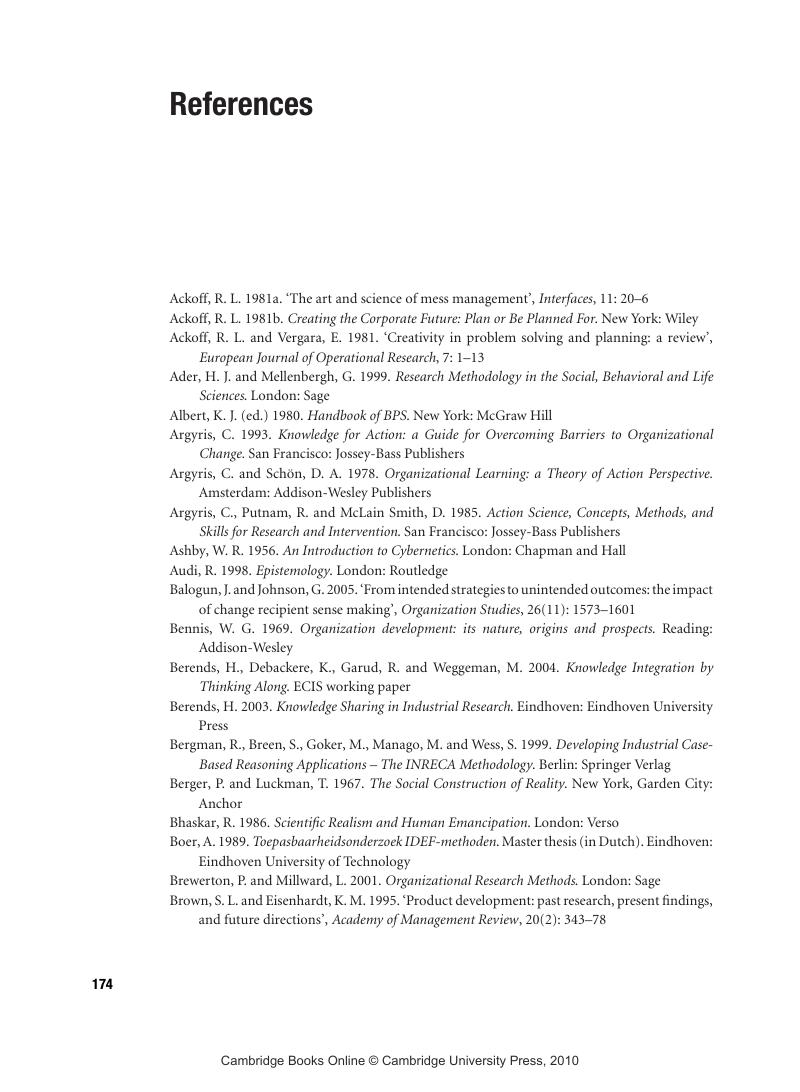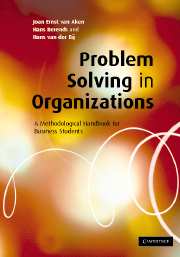References
Published online by Cambridge University Press: 04 December 2009
Summary

- Type
- Chapter
- Information
- Problem Solving in OrganizationsA Methodological Handbook for Business Students, pp. 174 - 180Publisher: Cambridge University PressPrint publication year: 2007



